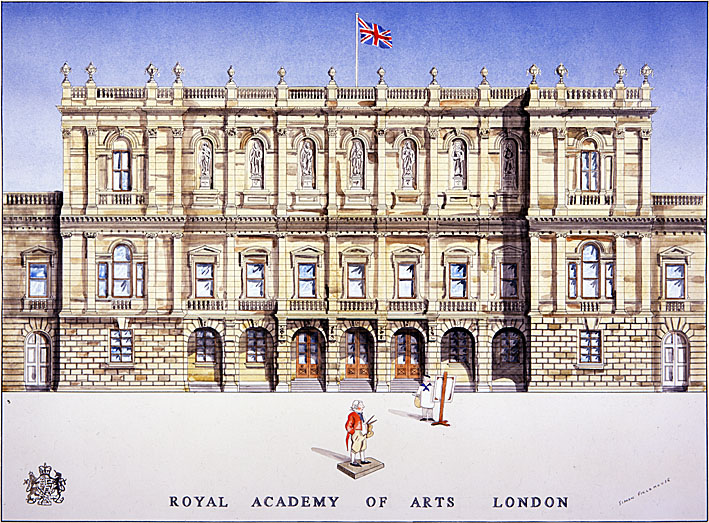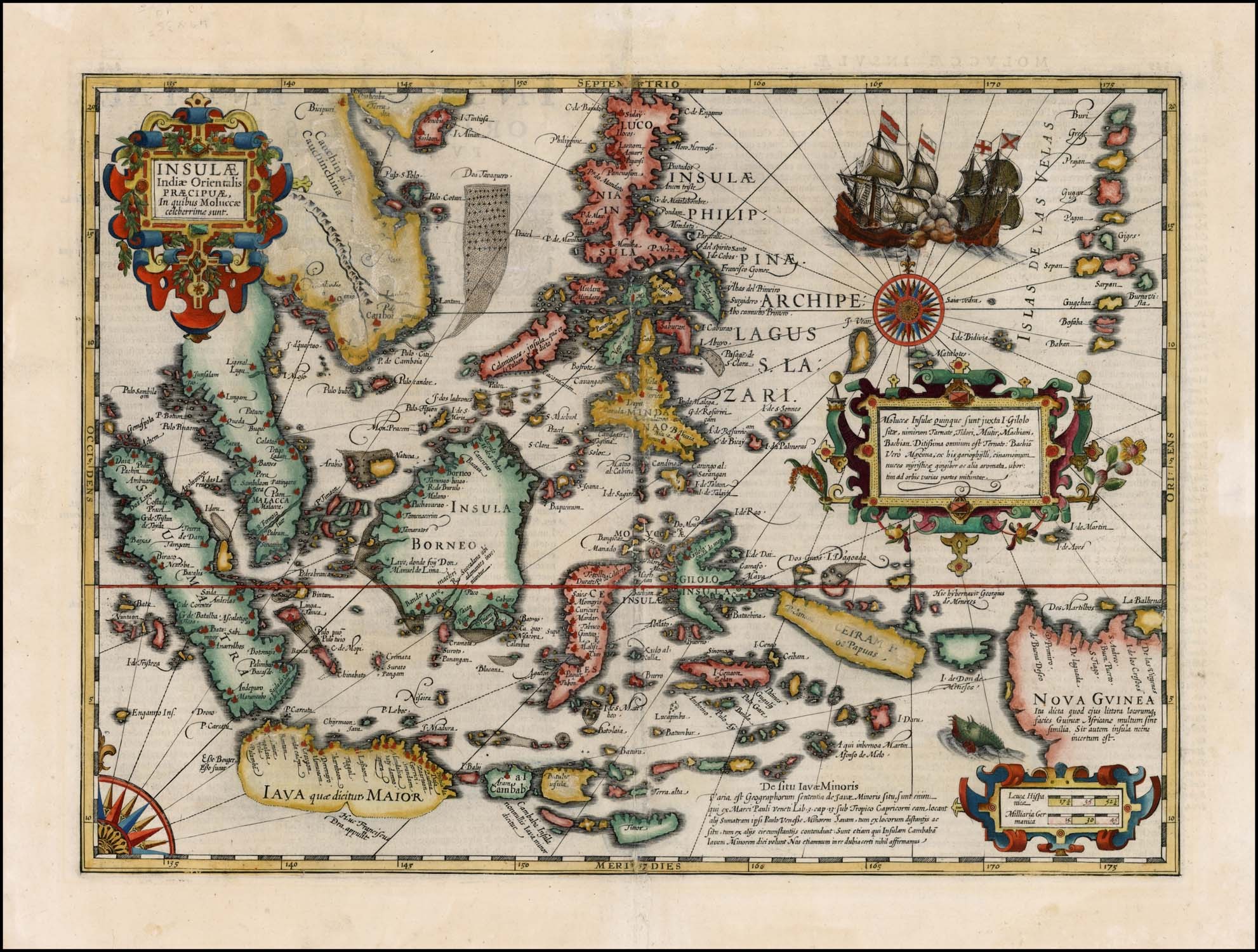|
Samuel Atkins
Samuel Atkins (fl. 1787–1808), was a British marine painter. Atkins contributed to the Royal Academy between 1787 and 1796. From 1796 to 1804 he was in the East Indies, when he returned to England, and continued to exhibit until 1808. He worked in oil and water-colour. The water-colour collections of South Kensington and the British Museum have each an example of his work. It is rather early in manner, low in tone, quiet, and truthful. A picture of ‘Shakespeare's Cliff, Dover,’ has been engraved after him by R. and D. Havell. Nagler attributes to this Samuel Atkins the originals of two engravings of sea-subjects after ‘— Atkins:’ ‘Ships in Sight of Harbour,’ engraved in aquatint by H. Merke; and ‘A Sea Piece,’ by F. Janinet. A water-colour drawing also, ‘Seascape with Ships,’ he gives to this painter. Gallery File:Unidentified Royal Navy frigate or sloop of war.jpg, Unidentified Royal Navy frigate or sloop of war (ca 1787-1800), in the collection at t ... [...More Info...] [...Related Items...] OR: [Wikipedia] [Google] [Baidu] |
Floruit
''Floruit'' (; abbreviated fl. or occasionally flor.; from Latin for "they flourished") denotes a date or period during which a person was known to have been alive or active. In English, the unabbreviated word may also be used as a noun indicating the time when someone flourished. Etymology and use la, flōruit is the third-person singular perfect active indicative of the Latin verb ', ' "to bloom, flower, or flourish", from the noun ', ', "flower". Broadly, the term is employed in reference to the peak of activity for a person or movement. More specifically, it often is used in genealogy and historical writing when a person's birth or death dates are unknown, but some other evidence exists that indicates when they were alive. For example, if there are wills attested by John Jones in 1204, and 1229, and a record of his marriage in 1197, a record concerning him might be written as "John Jones (fl. 1197–1229)". The term is often used in art history when dating the care ... [...More Info...] [...Related Items...] OR: [Wikipedia] [Google] [Baidu] |
Royal Academy
The Royal Academy of Arts (RA) is an art institution based in Burlington House on Piccadilly in London. Founded in 1768, it has a unique position as an independent, privately funded institution led by eminent artists and architects. Its purpose is to promote the creation, enjoyment and appreciation of the visual arts through exhibitions, education and debate. History The origin of the Royal Academy of Arts lies in an attempt in 1755 by members of the Society for the Encouragement of Arts, Manufactures and Commerce, principally the sculptor Henry Cheere, to found an autonomous academy of arts. Prior to this a number of artists were members of the Society for the Encouragement of Arts, Manufactures and Commerce, including Cheere and William Hogarth, or were involved in small-scale private art academies, such as the St Martin's Lane Academy. Although Cheere's attempt failed, the eventual charter, called an 'Instrument', used to establish the Royal Academy of Arts over a dec ... [...More Info...] [...Related Items...] OR: [Wikipedia] [Google] [Baidu] |
East Indies
The East Indies (or simply the Indies), is a term used in historical narratives of the Age of Discovery. The Indies refers to various lands in the East or the Eastern hemisphere, particularly the islands and mainlands found in and around the Indian Ocean by Portuguese explorers, soon after the Cape route was discovered. Nowadays, this term is broadly used to refer to the Malay Archipelago, which today comprises the Philippine Archipelago, Indonesian Archipelago, Malaysian Borneo, and New Guinea. Historically, the term was used in the Age of Discovery to refer to the coasts of the landmasses comprising the Indian subcontinent and the Indochinese Peninsula along with the Malay Archipelago. Overview During the era of European colonization, territories of the Spanish Empire in Asia were known as the Spanish East Indies for 333 years before the American conquest. Dutch occupied colonies in the area were known for about 300 years as the Dutch East Indies till ... [...More Info...] [...Related Items...] OR: [Wikipedia] [Google] [Baidu] |
Water-colour
Watercolor (American English) or watercolour (British English; see spelling differences), also ''aquarelle'' (; from Italian diminutive of Latin ''aqua'' "water"), is a painting method”Watercolor may be as old as art itself, going back to the Stone Age when early ancestors combined earth and charcoal with water to create the first wet-on-dry picture on a cave wall." London, Vladimir. The Book on Watercolor (p. 19). in which the paints are made of pigments suspended in a water-based solution. ''Watercolor'' refers to both the medium and the resulting artwork. Aquarelles painted with water-soluble colored ink instead of modern water colors are called ''aquarellum atramento'' (Latin for "aquarelle made with ink") by experts. However, this term has now tended to pass out of use. The conventional and most common ''support''—material to which the paint is applied—for watercolor paintings is watercolor paper. Other supports or substrates include stone, ivory, silk, reed, papyru ... [...More Info...] [...Related Items...] OR: [Wikipedia] [Google] [Baidu] |
South Kensington
South Kensington, nicknamed Little Paris, is a district just west of Central London in the Royal Borough of Kensington and Chelsea. Historically it settled on part of the scattered Middlesex village of Brompton. Its name was supplanted with the advent of the railways in the late 19th century and the opening (and shutting) and naming of local tube stations. The area has many museums and cultural landmarks with a high number of visitors, such as the Natural History Museum, the Science Museum and the Victoria and Albert Museum. Adjacent affluent centres such as Knightsbridge, Chelsea and Kensington, have been considered as some of the most exclusive real estate in the world. Geography As is often the case in other areas of London, the boundaries for South Kensington are arbitrary and have altered with time. This is due in part to usage arising from the tube stops and other landmarks which developed across Brompton. A contemporary definition is the commercial area around the So ... [...More Info...] [...Related Items...] OR: [Wikipedia] [Google] [Baidu] |
British Museum
The British Museum is a public museum dedicated to human history, art and culture located in the Bloomsbury area of London. Its permanent collection of eight million works is among the largest and most comprehensive in existence. It documents the story of human culture from its beginnings to the present.Among the national museums in London, sculpture and decorative and applied art are in the Victoria and Albert Museum; the British Museum houses earlier art, non-Western art, prints and drawings. The National Gallery holds the national collection of Western European art to about 1900, while art of the 20th century on is at Tate Modern. Tate Britain holds British Art from 1500 onwards. Books, manuscripts and many works on paper are in the British Library. There are significant overlaps between the coverage of the various collections. The British Museum was the first public national museum to cover all fields of knowledge. The museum was established in 1753, largely ... [...More Info...] [...Related Items...] OR: [Wikipedia] [Google] [Baidu] |
Mariners' Museum
The Mariners' Museum and Park is located in Newport News, Virginia, United States. Designated as America’s ''National Maritime Museum'' by Congress, it is one of the largest maritime museums in North America. The Mariners' Museum Library, contains the largest maritime history collection in the Western Hemisphere. History The museum was founded in 1930 by Archer Milton Huntington, son of Collis P. Huntington, a railroad builder who brought the Chesapeake and Ohio Railway to Warwick County, Virginia, and who founded the City of Newport News, its coal export facilities, and Newport News Shipbuilding in the late 19th century. Huntington and his wife Anna acquired of land that now holds of exhibition galleries, a research library, a lake, a five-mile shoreline trail with 14 bridges, and over 35,000 maritime artifacts from around the world. After the land acquisition took place, the first two years were devoted to creating and improving a natural park and constructing a d ... [...More Info...] [...Related Items...] OR: [Wikipedia] [Google] [Baidu] |
Newport News, Virginia
Newport News () is an independent city in the U.S. state of Virginia. At the 2020 census, the population was 186,247. Located in the Hampton Roads region, it is the 5th most populous city in Virginia and 140th most populous city in the United States. Newport News is included in the Hampton Roads metropolitan area. It is at the southeastern end of the Virginia Peninsula, on the northern shore of the James River extending southeast from Skiffe's Creek along many miles of waterfront to the river's mouth at Newport News Point on the harbor of Hampton Roads. The area now known as Newport News was once a part of Warwick County. Warwick County was one of the eight original shires of Virginia, formed by the House of Burgesses in the British Colony of Virginia by order of King Charles I in 1634. In 1881, fifteen years of rapid development began under the leadership of Collis P. Huntington, whose new Peninsula Extension of the Chesapeake and Ohio Railway from Richmond o ... [...More Info...] [...Related Items...] OR: [Wikipedia] [Google] [Baidu] |
Year Of Birth Unknown
A year or annus is the orbital period of a planetary body, for example, the Earth, moving in its orbit around the Sun. Due to the Earth's axial tilt, the course of a year sees the passing of the seasons, marked by change in weather, the hours of daylight, and, consequently, vegetation and soil fertility. In temperate and subpolar regions around the planet, four seasons are generally recognized: spring, summer, autumn and winter. In tropical and subtropical regions, several geographical sectors do not present defined seasons; but in the seasonal tropics, the annual wet and dry seasons are recognized and tracked. A calendar year is an approximation of the number of days of the Earth's orbital period, as counted in a given calendar. The Gregorian calendar, or modern calendar, presents its calendar year to be either a common year of 365 days or a leap year of 366 days, as do the Julian calendars. For the Gregorian calendar, the average length of the calendar year ... [...More Info...] [...Related Items...] OR: [Wikipedia] [Google] [Baidu] |
18th-century British Painters
The 18th century lasted from January 1, 1701 ( MDCCI) to December 31, 1800 ( MDCCC). During the 18th century, elements of Enlightenment thinking culminated in the American, French, and Haitian Revolutions. During the century, slave trading and human trafficking expanded across the shores of the Atlantic, while declining in Russia, China, and Korea. Revolutions began to challenge the legitimacy of monarchical and aristocratic power structures, including the structures and beliefs that supported slavery. The Industrial Revolution began during mid-century, leading to radical changes in human society and the environment. Western historians have occasionally defined the 18th century otherwise for the purposes of their work. For example, the "short" 18th century may be defined as 1715–1789, denoting the period of time between the death of Louis XIV of France and the start of the French Revolution, with an emphasis on directly interconnected events. To historians who expand ... [...More Info...] [...Related Items...] OR: [Wikipedia] [Google] [Baidu] |






_at_Newport_News_Shipbuilding_on_20_March_1942_(NH_75592).jpg)
